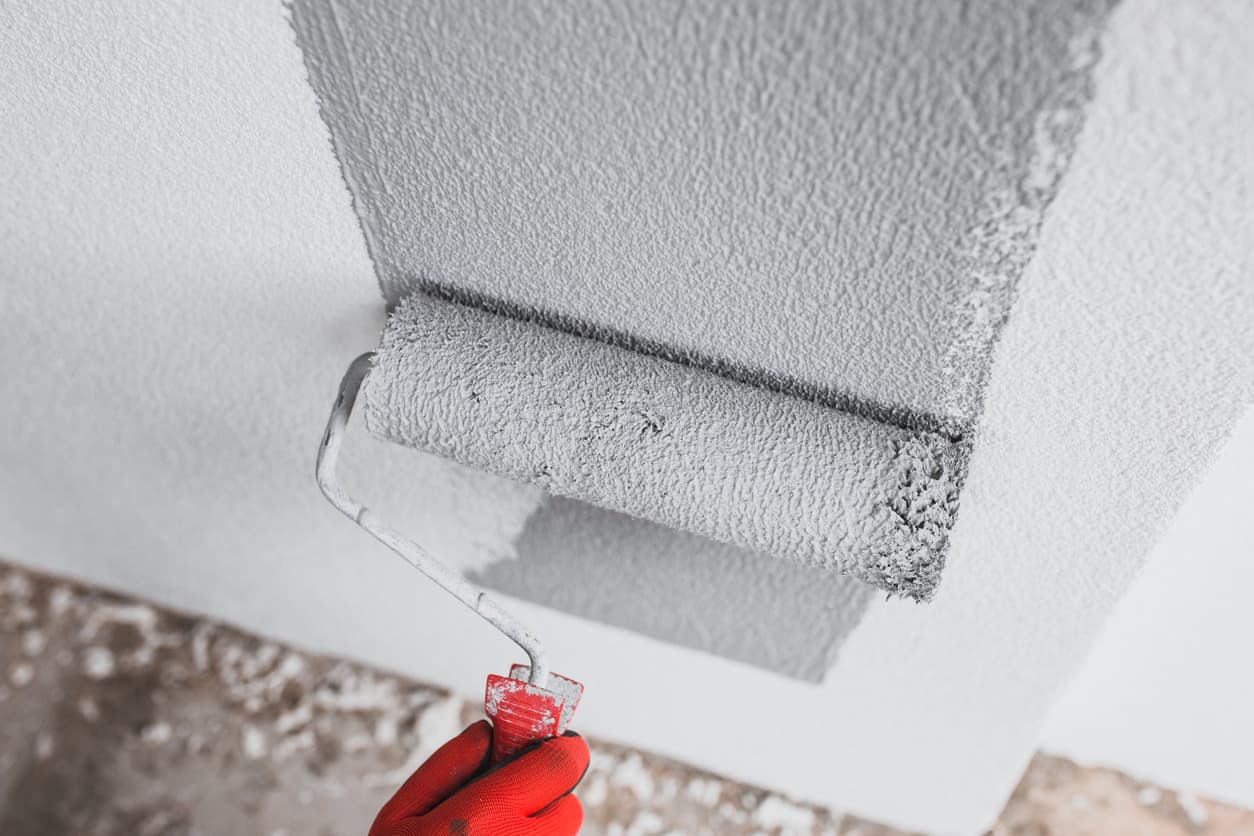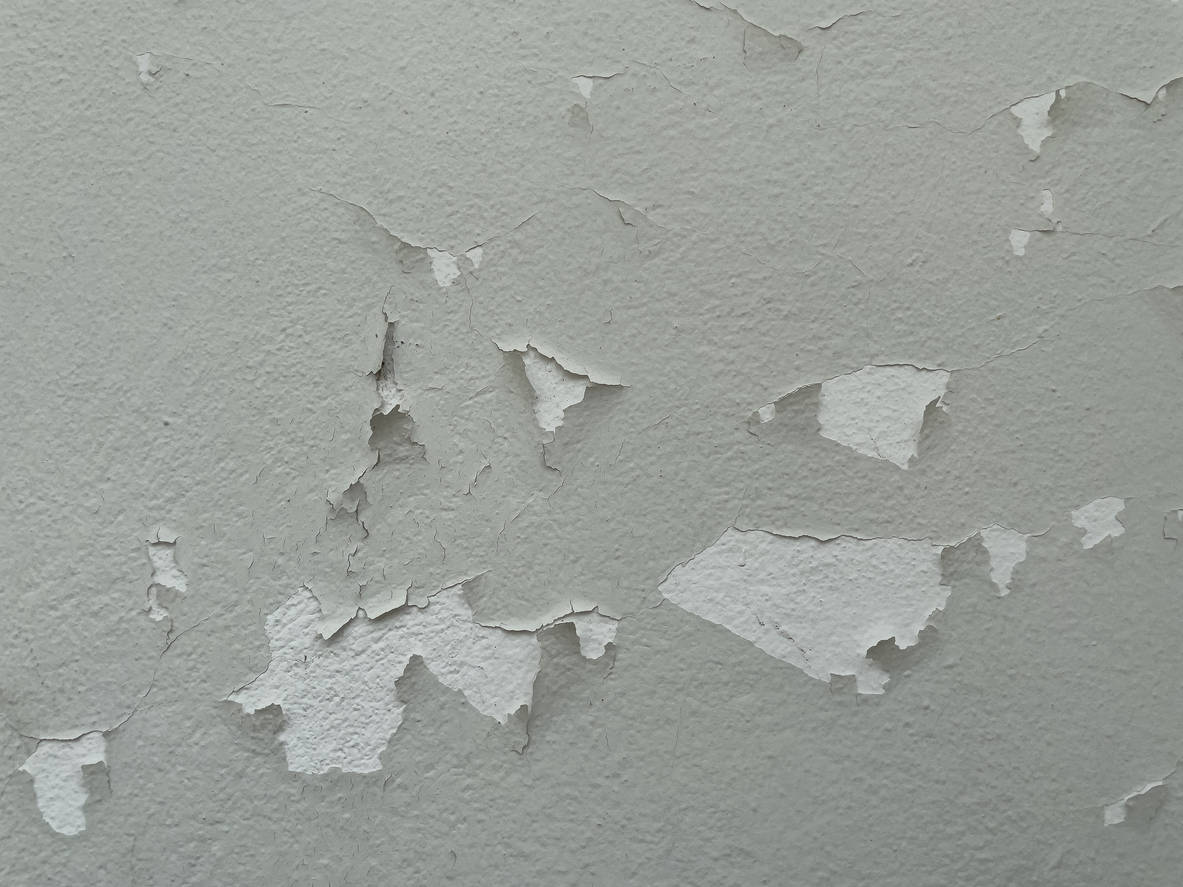When tackling interior house painting, one common challenge many face is dealing with chipped paint on walls. It’s a snag that can dampen the aesthetic of any room. But no need to worry! This guide is your roadmap to fixing those pesky paint chips, transforming your walls back to perfection. Let’s dive in and make those walls look flawless again!
How to Fix Chipped Paint on Walls

Why Does Paint Chip?
Paint chipping on walls is a problem that can arise for various reasons. It might be due to improper application, moisture issues, or just the age of the paint. Understanding the root cause is crucial in ensuring a lasting fix.
Here are the common causes of paint chipping:
Poor Adhesion
Poor adhesion is a primary culprit when it comes to chipped paint. It occurs when the paint doesn’t adequately stick to the surface. This issue can stem from several factors, such as a dirty or glossy surface, lack of primer, or applying a new coat over an old, incompatible type of paint. Ensuring proper surface preparation is crucial to avoid this problem and ensure a long-lasting paint job.
Moisture
Moisture is a significant factor that can lead to paint chipping. High humidity levels, water leaks, or condensation can cause the paint to lose its grip on the wall, leading to lifting and eventual chipping. In areas with high moisture, such as bathrooms or kitchens, it’s essential to use moisture-resistant paints and ensure adequate ventilation to prevent these issues.
Wear and Tear
Over time, even the best quality paint will start to show signs of wear and tear. This natural aging process is more pronounced in areas with heavy foot traffic or frequent usage. Corners, door frames, and areas near light switches often show the earliest signs of paint wear. Regular maintenance, including cleaning and touch-ups, can significantly extend the life of your paint and keep it looking fresh.
Preparation: The First Step to Fixing Chipped Paint
Gathering Your Materials
Before diving into the repair, ensure you have the right tools and materials. You’ll need:
- Spackle or joint compound
- Putty knife
- Sandpaper
- Primer
- Matching paint
- Paintbrush or roller
Surface Preparation
The importance of effective surface preparation in achieving a successful paint repair cannot be overemphasized. It is key to ensuring a smooth and long-lasting repair.
Start by thoroughly cleaning the chipped area to remove any dirt, grease, or debris. This step ensures that the repair materials adhere properly to the surface.
Next, gently scrape away any loose or flaking paint from around the chip. It’s important to be thorough yet gentle during this process to avoid creating more damage to the wall.
The Repair Process
Filling the Chip
When addressing a chip in your wall, the first step is to apply spackle or joint compound. Use a putty knife to fill the chip, ensuring the application is even and flush with the rest of the wall. It’s important to apply enough material to completely cover the defect but avoid excess, which can create unevenness.
Allow the filler to dry completely, which may take a few hours depending on the product and environmental conditions. This drying stage is crucial for a sturdy and effective repair.
Sanding and Priming
After the filler has dried, the next step is sanding. Carefully sand the repaired area to create a smooth, even surface. This process removes any rough edges or unevenness in the spackle, ensuring that the final paint application will be seamless.
After sanding, it’s essential to apply a layer of primer. The primer serves as an intermediary layer that improves paint adhesion and ensures the longevity of the repair. It also helps in achieving uniform color and sheen in the final painted surface. Be sure to let the primer dry completely before proceeding to paint.

Painting Over the Repair
Choosing the Right Paint
Selecting the right paint is crucial for a seamless repair. The goal is to match the new paint with the existing wall color as closely as possible. If you are unsure about the exact shade, it’s a wise idea to take a small chip of the existing paint to a local paint store.
Many stores offer color matching services, where they can precisely match the color and finish of your existing paint. This step ensures that the repaired area blends in perfectly with the rest of the wall, maintaining the room’s aesthetic consistency.
Application Tips
The application process is just as important as the paint selection. For best results, apply the paint in thin, even layers. This technique allows each layer to dry thoroughly and adhere properly to the surface, reducing the likelihood of future chipping and peeling.
Patience is key; rushing the process by applying thick layers or not allowing enough drying time between coats can lead to a subpar finish. By applying thin layers and allowing sufficient drying time, you ensure a smooth, professional-quality finish that lasts.
Maintaining Your Walls
Preventing Future Chips
Maintaining the integrity of your walls goes beyond just fixing current chips. To prevent future chipping, it’s crucial to address any underlying moisture issues. Moisture can weaken the paint’s adhesion, making it prone to chipping. Use dehumidifiers or improve ventilation in damp areas.
Additionally, protecting high-traffic areas, such as hallways or near door frames, with extra coats of paint or sealant can significantly reduce the wear and tear. Regularly inspect these areas for early signs of damage and take prompt action to keep your walls in pristine condition.
Regular Cleaning and Touch-Ups
Regular maintenance is key to preserving the beauty of your painted walls. This includes routinely wiping down the walls to remove dust and grime, which can over time degrade the paint surface. Use a soft, damp cloth for cleaning, and avoid harsh chemicals that can strip the paint.
Additionally, keep an eye out for minor chips or peeling. Addressing these small imperfections promptly with touch-up paint can prevent them from escalating into larger issues. This proactive approach not only keeps your walls looking fresh but also extends the lifespan of your paint job.
Conclusion
Fixing chipped paint on a wall might seem daunting, but with the right approach, it’s a simple task. By understanding the cause, preparing properly, and following the repair steps, you’ll have your walls looking as good as new in no time. Remember, a little effort goes a long way in maintaining the beauty and longevity of your interior house painting.
If you’re looking for a hassle-free solution to keep your walls in top condition, reach out to DeltaPro Painters. With our expertise in both residential and commercial painting, we offer top-tier services that go beyond just aesthetics.
Our professionals are skilled in identifying and solving underlying issues like moisture that could affect your paint’s longevity. Plus, with our commitment to quality and customer satisfaction, you’re assured of a service that values your home as much as you do.
For peace of mind and exceptional results, give DeltaPro Painters a call at 513-436-3473. We’re your trusted experts in turning your painting projects into lasting beauty.


